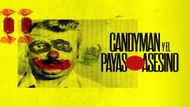The Clown and the Candyman were two of the most infamous names to disturb American lives in the 70s. In the dark corners of 1970s America, these two men became the real-life embodiment of the era’s most horrifying nightmares.
John Wayne Gacy and Dean Corll were infamously nicknamed The Clown and The Candyman. They disguised themselves as friendly neighbourhood residents but preyed on boys and young men across Illinois and Texas, leaving a trail of broken families and unimaginable horror.
Decades later, the true-crime docuseries The Clown and The Candyman revisits their cases. In this series the show-creators dare to walk beyond the murders committed by John Wayne Gacy and Dean Corll, while uncovering the shocking link between the two serial killers and an elaborate, horrifying nationwide pedophile ring.
The killer behind the 'Clown' smile, John Wayne Gacy
John Wayne Gacy was a quiet neighbor that nobody suspected. He was a building contractor, and delivered his clown performances at hospitals as ‘Pogo”. But beneath the makeup and guise of normalcy, Gacy possessed the mind of a predator.
In just 6 years, between 1972 and 1978, Gacy had lured 33 young men and boys, assaulted and murdered them. He used lures of prospective job offers or acts of kindness to make unsuspecting victims fall into his trap, stories of which would later find place in the docuseries.

Remains of 26 victims were traced and buried in the crawl space of his Chicago home, images of which sent the entire nation into a shock.
Finally in 1978, The clown was arrested. What terrified people upon the discovery of Gacy’s horrifying true crime, was how someone who entertained children and maintained a good reputation amongst neighbours committed such acts.
His case is a classic example of how the line between civility and monstrosity can be blurred. More surprisingly, when Gacy was executed in 1994, he expressed no remorse for the assault and murder on innocent boys and men by him.
The 'Candyman' of Houston heights
Another evil that haunted 70s America was a man residing thousand miles away named Dean Corll. He ran a small candy business in Houston but between 1970 and 1973 his inhumane killing spree was unleashed with the help of two other teenage accomplices named David Brooks and Elmer Wayne Henley Jr.

The group assaulted, tortured and murdered 28 boys in cold blood but Corll’s crimes came to light only when Henley, realizing the sheer amount of horror, shot him dead. As investigations followed, it brought to light the horrifying magnitude of his crimes: bodies were traced in boathouses and shallow graves.
Both Gacy and Corll represented the plague that haunted the 70s resulting in the air of distrust among common citizens. While Gacy used public trust and an unsuspecting image to disguise his depravity, Corll used familiarity and gifts to lure innocent boys into their fold.
The series that connected the horrors
Many decades later, the 2021 docuseries The Clown and The Candyman re-examined the cases and traced some chilling similarities and links between these two killers. Using archival interviews, footage, and information from FBI files, the series brought to scrutiny how two predators could continue their criminal spree under such similar social blind spots and if these crimes were linked by something bigger.
The show offers a suggestion that may be more disturbing than one could imagine. It hints at a possibility that these crimes were not isolated. The killings may have been separated by geographical locations but may be a part of a wider pedophile network across different states.
But, it is important to note here that this suggestion has not been proven. Some letters, overlapping names, and unexplained disappearances suggest systematic loopholes and raise questions of accountability.
Unlike sensationalist true-crime retellings, The Clown and The Candyman does its job well in focusing on the victims, their faces, their dreams, their erasure.
